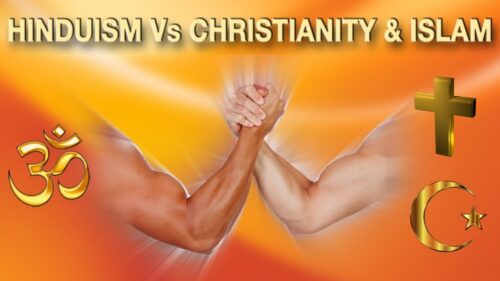Hindu Vs Muslim

Understanding the Cultural, Religious, and Social Dynamics Between Hindus and Muslims
The relationship between Hindus and Muslims, two of the world’s largest religious communities, is complex, multifaceted, and deeply rooted in history, culture, and geopolitics. This article explores the nuances of this relationship, moving beyond simplistic narratives of conflict to examine shared histories, points of divergence, and pathways to coexistence.
Historical Context: A Shared Legacy
The Indus Valley to the Mughal Era
The Indian subcontinent, home to both Hinduism and Islam, has a history spanning millennia. Hinduism, one of the world’s oldest religions, evolved over thousands of years, while Islam arrived in the 7th century CE through trade, Sufi missionaries, and later, Turkic and Mughal conquests. The Mughal Empire (1526–1857) marked a zenith of cultural synthesis, with Hindu-Muslim artistic, architectural, and literary collaborations. Monuments like the Taj Mahal and Humayun’s Tomb reflect this fusion.
Colonial Divide and Rule
British colonial policies exacerbated religious divisions through administrative measures like the 1909 Minto-Morley Reforms, which introduced separate electorates for Muslims. The partition of India in 1947, driven by the Two-Nation Theory, resulted in the creation of Pakistan and India, leading to mass migrations and communal violence that left scars still felt today.
Religious and Philosophical Differences
Core Beliefs and Practices

| Aspect | Hinduism | Islam |
|---|---|---|
| God Concept | Polytheistic/Monistic (Brahman); multiple deities as manifestations. | Monotheistic (Allah); one indivisible God. |
| Scriptures | Vedas, Upanishads, Bhagavad Gita, Puranas. | Quran, Hadith (sayings of Prophet Muhammad). |
| Afterlife | Reincarnation based on karma; liberation (moksha) as ultimate goal. | Judgment Day (Qiyamah); heaven (Jannah) or hell (Jahannam). |

While these differences are significant, both traditions emphasize ethical living, compassion, and devotion. Sufism in Islam and Bhakti movements in Hinduism share themes of mystical union with the divine, fostering cross-cultural exchanges historically.
Socio-Political Tensions: Causes and Manifestations
Key Flashpoints

- Ayodhya Dispute: The demolition of the Babri Masjid in 1992, claimed to be built over a Hindu temple, remains a symbol of religious strife. The 2019 Supreme Court verdict awarded the site to Hindus, highlighting legal complexities.
- Political Instrumentalization: Identity politics often exploit religious differences. Parties like India’s BJP and Pakistan’s PTI have been accused of stoking communal sentiments for electoral gains.
- Global Islamophobia and Hindutva: Rising Islamophobia post-9/11 and assertions of Hindu nationalism (Hindutva) have polarized communities, with minority groups often bearing the brunt.
Perspectives on Conflict
Pro: Religious identity strengthens community bonds and preserves cultural heritage.
Con: Rigid identities can fuel exclusionary policies and violence, as seen in incidents like the 2002 Gujarat riots or targeted lynchings over cow protection.
Shared Challenges and Collaborative Efforts
Uniting Against Common Issues
- Environmental Concerns: Hindu and Muslim communities in South Asia collaborate on river conservation (e.g., Ganges/Yamuna) and sustainable farming, rooted in shared reverence for nature.
- Social Justice Movements: Interfaith initiatives like the Bharat Jodo Yatra in India emphasize unity, addressing caste and economic inequalities affecting both communities.
- Artistic Revivals: Sufi-Hindu musical traditions (Qawwali, Bhajan) continue to bridge divides, celebrated in festivals like Kabir Fest in Varanasi.
“Peace is not the absence of conflict but the presence of creative alternatives for responding to conflict.” — Dorothy Day
Future Trends: Toward Inclusive Coexistence
Pathways Forward
- Education Reforms: Inclusive curricula teaching shared histories and religious pluralism can dismantle stereotypes. UNESCO’s Global Citizenship Education is a model.
- Policy Interventions: Strengthening secular governance, anti-discrimination laws, and equitable resource distribution can mitigate grievances.
- Grassroots Dialogue: Interfaith youth networks (e.g., United Religions Initiative) foster trust through community service and cultural exchanges.
The Hindu-Muslim dynamic is not a binary of conflict but a spectrum of interactions shaped by history, politics, and individual agency. Emphasizing shared values and addressing structural inequalities offers a roadmap for harmonious coexistence.
What caused the partition of India in 1947?
+Partition was driven by the Two-Nation Theory, British colonial policies, and escalating Hindu-Muslim tensions, culminating in the creation of India and Pakistan.
How do Hindus and Muslims coexist in secular countries?
+In nations like India, constitutional secularism, legal protections, and grassroots interfaith initiatives enable coexistence despite periodic tensions.
What role does media play in shaping perceptions?
+Media can either amplify stereotypes or promote understanding. Responsible journalism highlighting shared narratives is critical for peacebuilding.
Can religious leaders mediate conflicts effectively?
+Yes, leaders like the Dalai Lama and Maulana Wahiduddin Khan have advocated dialogue, though political co-optation remains a challenge.
The Hindu-Muslim relationship is a tapestry woven with threads of history, faith, and politics. By acknowledging complexities and fostering mutual respect, societies can move beyond divisions toward a shared future of dignity and cooperation.